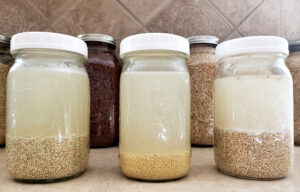 Anyone who knows me knows that I am a big fan of fermented foods. I have worked as a head brewer for two large kombucha companies; I have been making my own kefir for almost 15 years; and I have dabbled in making fermented veggies, krauts, and kvass on many occasions (although some experiments have been less than successful). In more recent years, I have learned about fermenting grains before eating them, and ever since I have not looked back! If you are sensitive to grains, feel heavy or bloated after eating them, or simply have sensitive digestion, this may be a healthy way to allow grains in your diet without digestive upset!
Anyone who knows me knows that I am a big fan of fermented foods. I have worked as a head brewer for two large kombucha companies; I have been making my own kefir for almost 15 years; and I have dabbled in making fermented veggies, krauts, and kvass on many occasions (although some experiments have been less than successful). In more recent years, I have learned about fermenting grains before eating them, and ever since I have not looked back! If you are sensitive to grains, feel heavy or bloated after eating them, or simply have sensitive digestion, this may be a healthy way to allow grains in your diet without digestive upset!
Why Ferment Grains?
It may surprise you to hear that fermenting grains does NOT provide probiotics, mainly because (I assume) you will be cooking the grains which will kill the very probiotics that are involved in the fermenting process. So if we are not fermenting for the sake of yielding a probiotic-rich food, then what are the reasons? Well despite (sadly) killing off the probiotics, fermenting grains does make them much easier to digest, lighter in quality, and more nutrient-available.
Grains contain phytic acid, lectin, oxalates, tannins, and saponins, all of which are considered “anti-nutrients” because of their ability to bind to vitamins and minerals and inhibit their absorption in the body. The affected nutrients include phosphorous, zinc, magnesium, iron, and calcium which can be blocked not only from the grain itself but from other foods or supplements you eat around the same time.
Phytic acid is also known as an enzyme inhibitor. Enzyme inhibitors bind to digestive enzymes and block their functioning, hence weakening the digestive fire (Agni) and prohibiting the breakdown of food. Over time, this produces toxins, clogs the channels of the GI tract, and fosters weight gain and inflammation.
Many individuals feel heavy, bloated, or sleepy after eating grains. This is often a Kapha-type symptom revealing Manda Agni or “sluggish digestive fire” and can accompany thyroid issues and metabolic disorders. In these instances, grains should still be limited, but by fermenting grains and eating them in moderation, this simple preparatory step may give you a little freedom in an otherwise grain-free diet.*
*Although fermenting grains may be a great option for some individuals, it may not be the cure-all for everybody. If you are dealing with a condition that does not allow you to eat grains, you can try this method but always listen to your body to see if it is right for you!
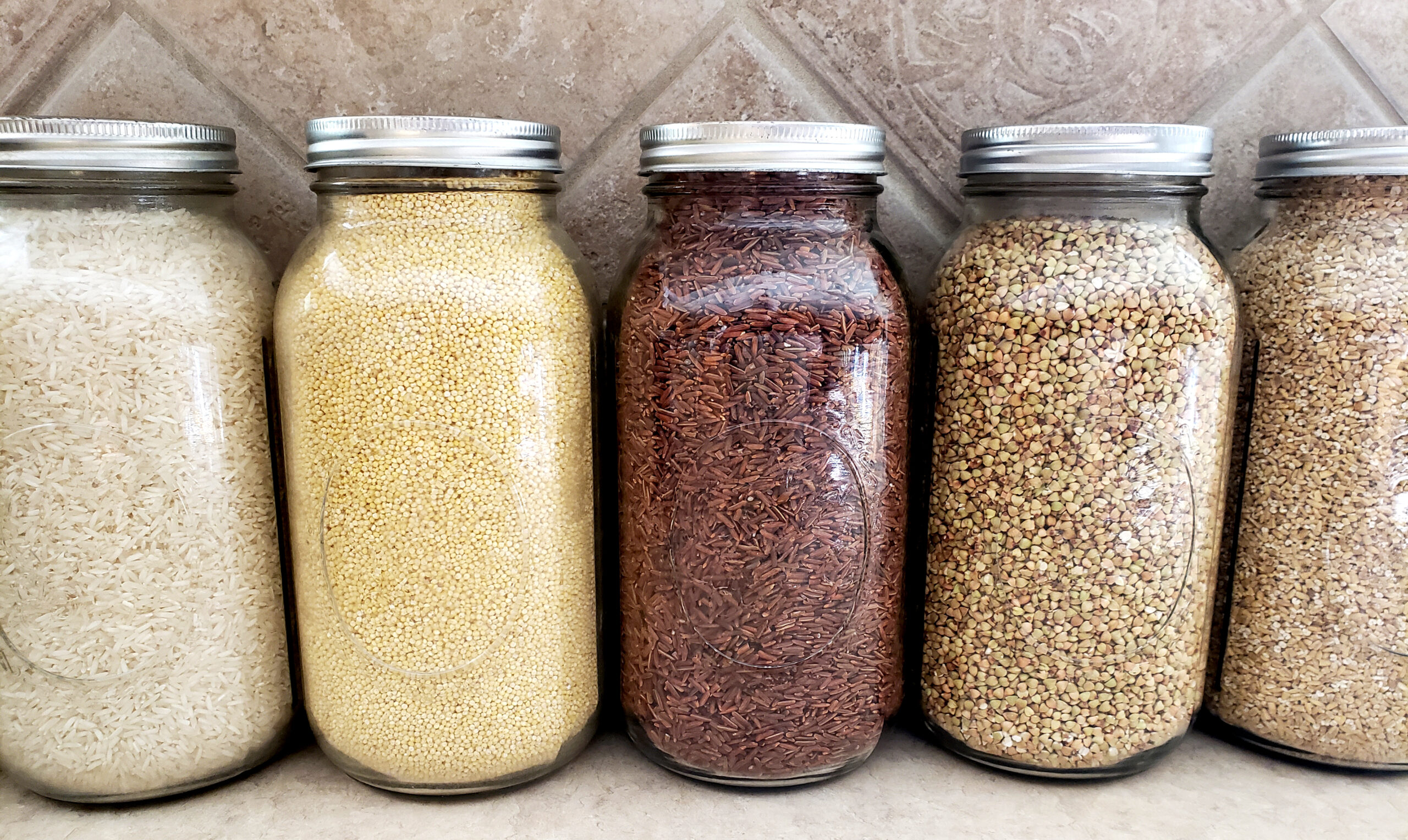
Which Grains Can Be Fermented?
When it comes to fermenting grains, pretty much any whole grain can be used. This includes:
- Quinoa
- Millet
- Steel Cut Oats
- Amaranth
- Buckwheat
- Rice (any variety)
- Barley
Since it is important to drain out the soaking water before cooking (otherwise you will be ingesting the phytic acid, etc), I do not recommend fermenting rolled oats or any type of flour.
What Types Of Culture Can Be Used For Fermenting Grains?
To ignite the fermentation process when soaking grains, it is recommended to use a liquid starter culture. There are a handful of choices, but remember that the cooked grains will take on a hint of flavor from the starter liquid, especially if you are using a spiced brine from a fermented veggie or a fruity-flavored kombucha drink.
I often use my homemade kefir (which has a very neutral flavor) as a starter for almost all of my grain ferments. If I am going to cook a grain for a savory dish I may use brine from some fermented veggies, but I prefer to use my kefir as a starter overall (simple, tasty, and I always have some at hand).
Make your own kefir with this simple recipe!
Here are a few culture starter options you can choose from:
- Whey from plain yogurt
- Plain dairy kefir (I use my homemade kefir which is naturally very liquidy)
- Water kefir
- Brine from fermented veggies, sauerkraut, or kimchi
- Kombucha or jun
- Beet kvass
Powdered cultures are not generally recommended.
How Long Should You Ferment Grains?
The average timeframe for fermenting grains is between 24 to 48 hours. I have heard of individuals going up to 72 hours, but I personally find the flavor to become a bit too sour and overpowering (not to mention Pitta-provoking). If you are a newbie to fermenting or have a strong Pitta imbalance or Pitta constitution, I would suggest starting with fermenting 24 hours max. If you enjoy the sourness of a ferment and do well with fermented foods, you can venture to the 48-hour realm. Try experimenting with both timeframes and see which one tastes and digests best for you!
If you are short on time, you can get away with a 12-hour or overnight ferment which is better than nothing. For this, I would recommend keeping the jar somewhere warm (by a crockpot, space heater, or in the oven with a pilot light. The addition of a little extra warmth will speed up the fermenting process quite nicely!
If you are like me and wake up some mornings and realize you have not soaked or fermented grains (yikes!), I will at least boil some water and soak the grains in for a couple of hours in the hot water. This will not ferment the grains, but it does soften them up a bit and releases at least some of the anti-nutrients.
If for any reason you cannot cook your grains on the day planned and you are worried about over-fermenting them, you can slow down the fermentation greatly by placing the jar in the refrigerator. This will not completely stop the fermentation process but will slow it down immensely and will buy you an extra day or two until you are ready to cook.
How Do You Cook Fermented Grains?
After straining the fermented grains, you will basically cook them the same as you would cook them otherwise. However, I have found that they tend to use a little less water for the cooking process and often cook slightly quicker than their non-fermented counterpart. And the longer the ferment (say a 48-hour ferment compared to a 12-hour ferment) the more this holds true!
For example, if I am cooking a cup of fermented quinoa, I would use 1¾ cups of water rather than the full 2 cups (you can always add more if needed). Then I would cook them for about 11 to 12 minutes rather than the full 14 to 15 minutes.
If you are new to cooking a fermented grain, start with less water and less time but keep a close eye on it as it cooks. Add more water if needed and cook longer if needed. After cooking a particular fermented grain several times you will get to know the exact water amount and time needed.
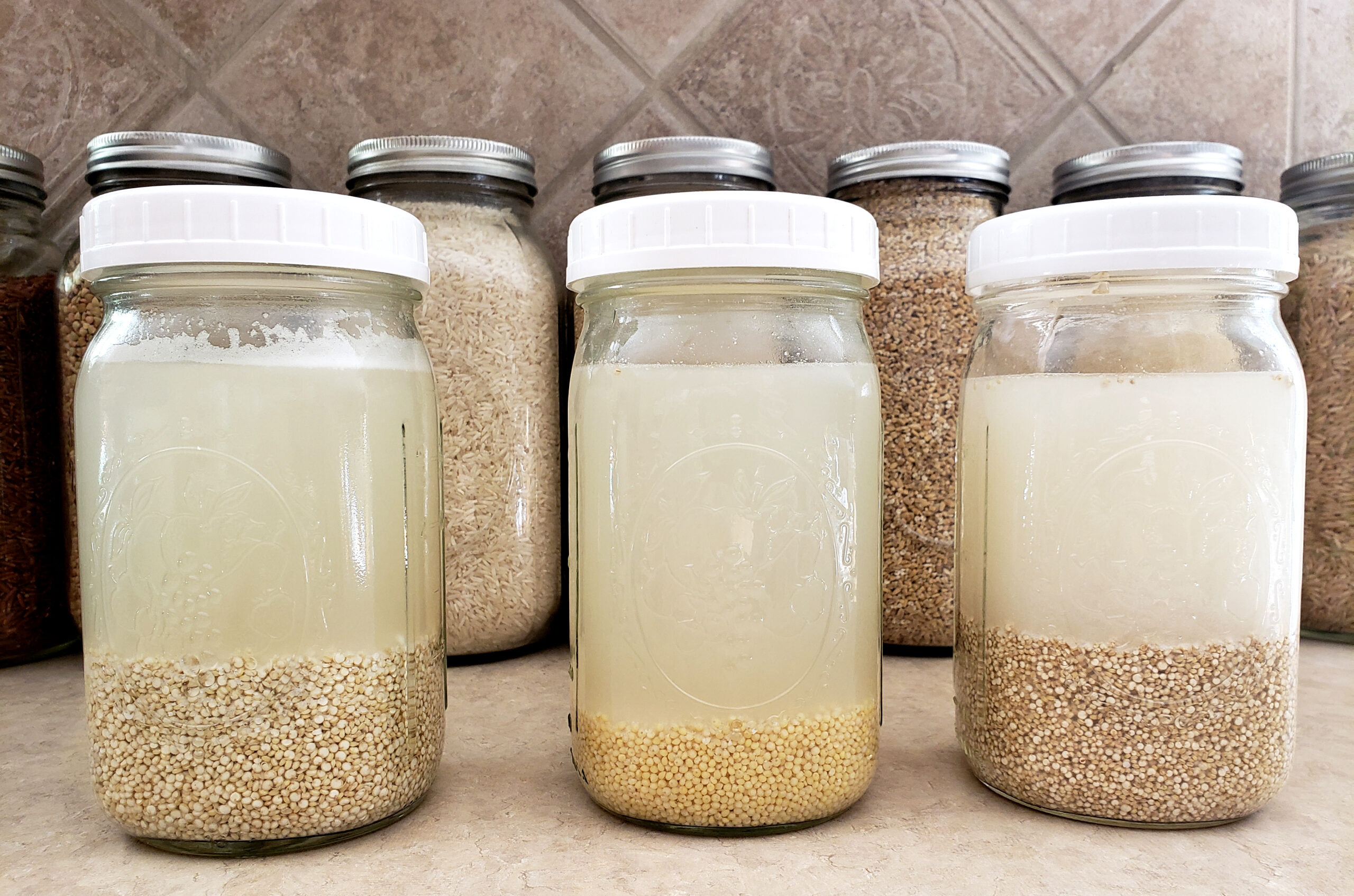
How To Ferment Grains
Click here for a printable copy of these instructions.
Materials
- Clean glass jar with lid* (plastic lid if possible)
- Whole grain of choice
- Water
- Liquid culture starter (about 1 to 2 tablespoons per cup of grains)—this can be any fermented liquid including whey, homemade kefir, kombucha, or brine from fermented veggies, kimchi, or kraut)
* I use a quart-size (4-cup) glass ball jar for up to a cup of dry grains. If you are cooking more than 1 cup of grains, then you will need a larger jar.
Order 4-cup ball jars with plastic lids here.
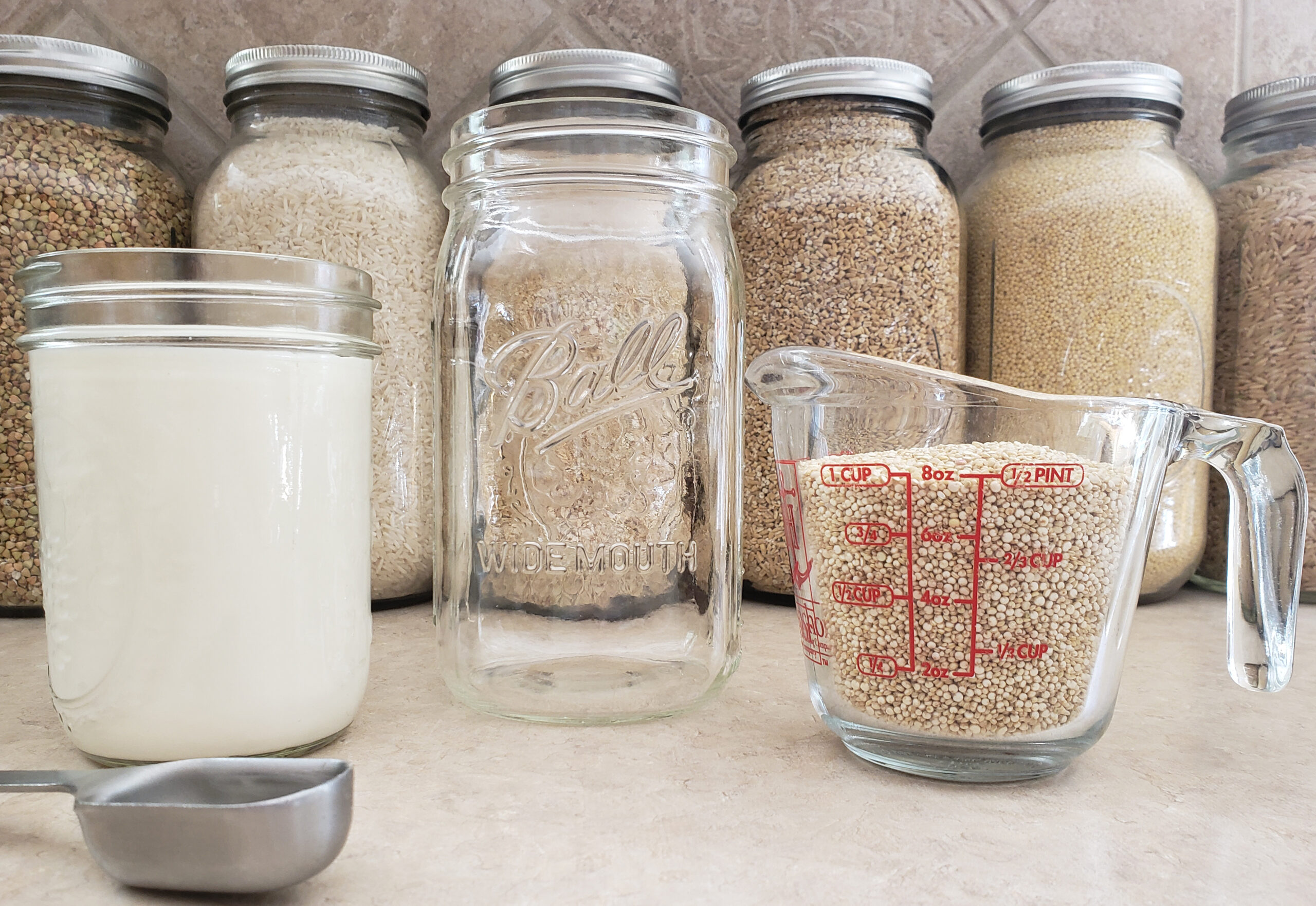
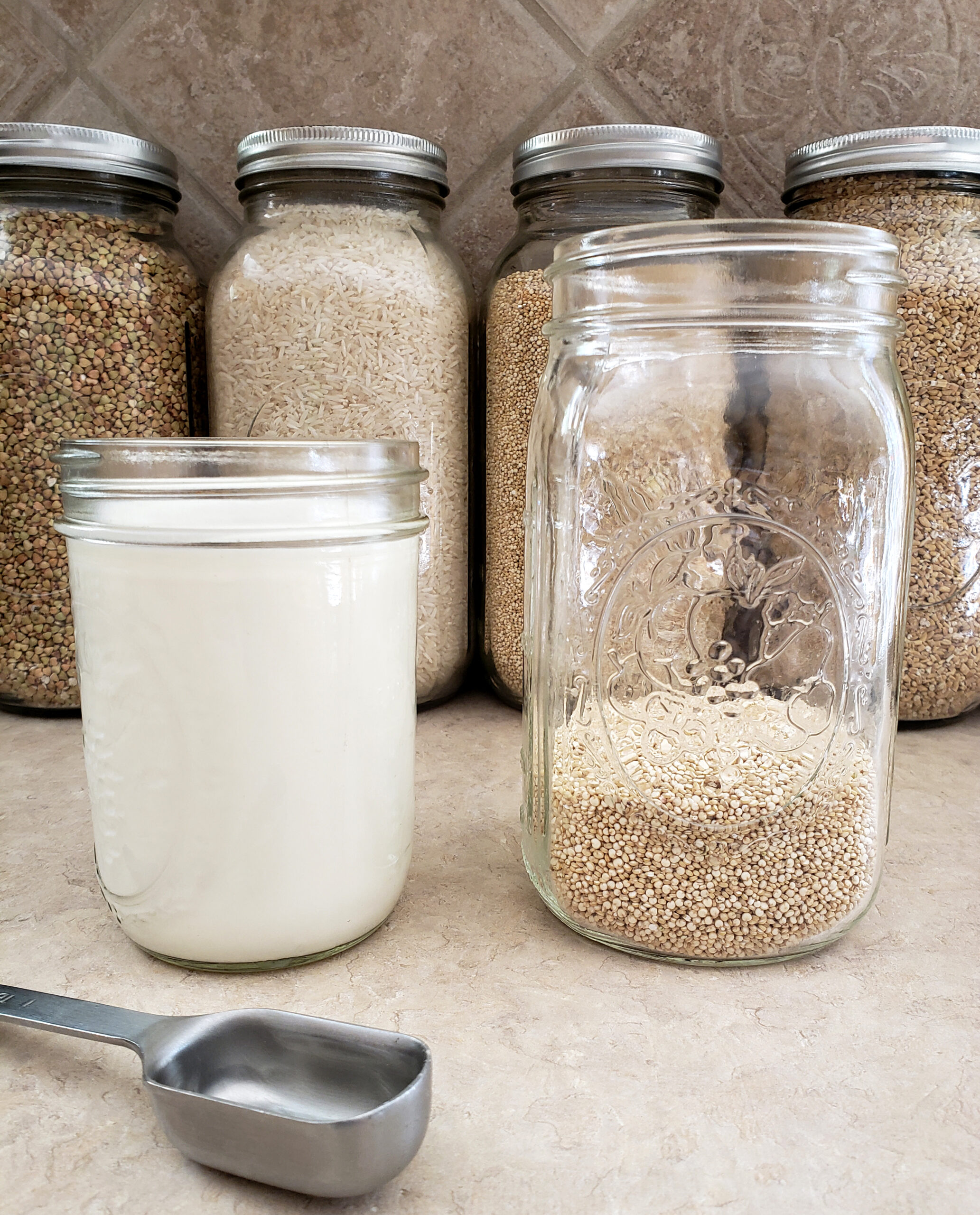
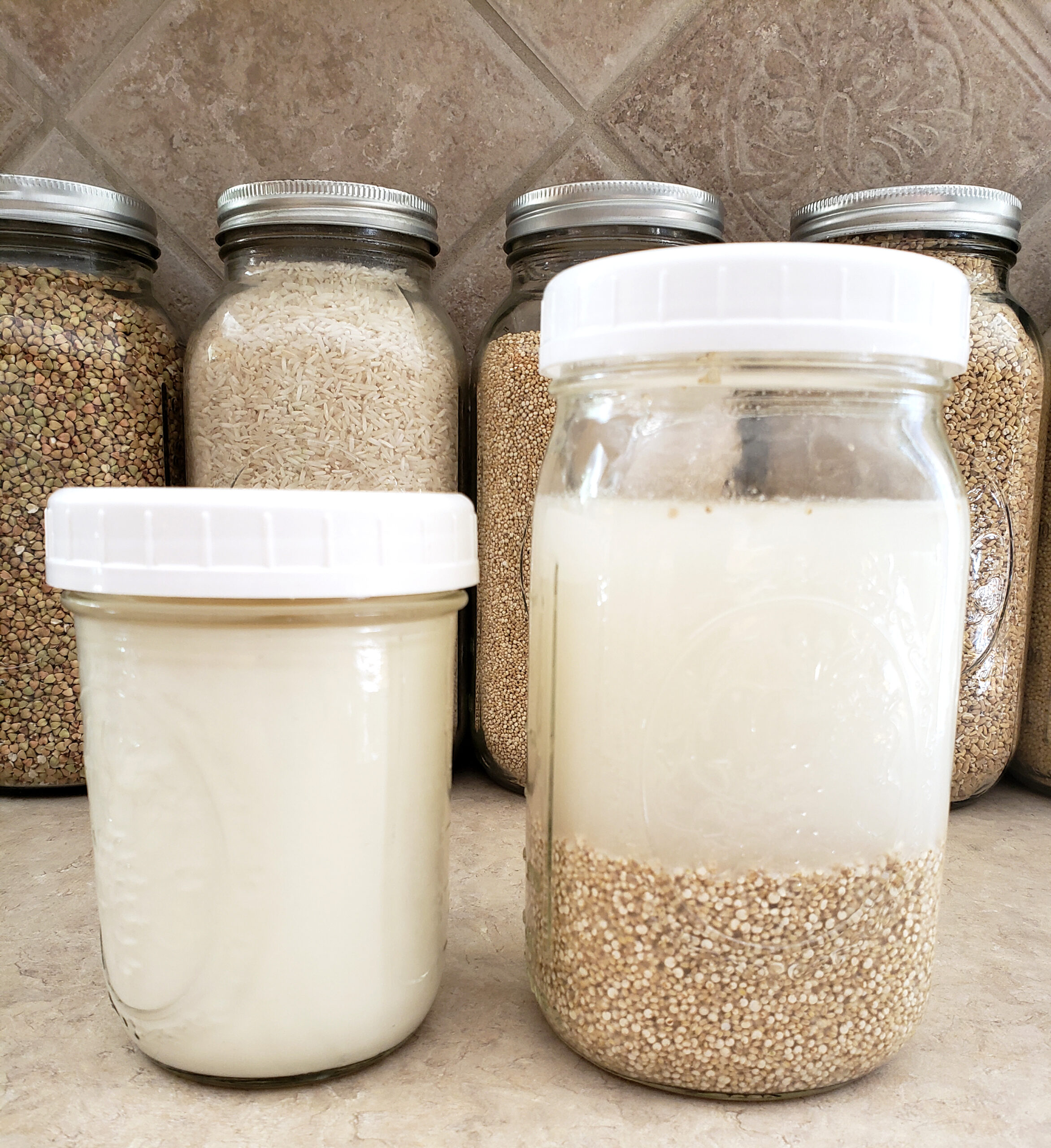
Instructions
Click here for a printable copy of these instructions.
1. Add the uncooked whole grain to a clean glass jar.
2. Fill with water, leaving about 2 to 3 inches of space. If I am using a 4-cup ball jar, I generally fill it until the 3-cup mark.
3. Add in the liquid starter culture. If you are using a 4-cup quart jar and are using 1 cup of dry grains or less, then 1 to 2 tablespoons of liquid starter is plenty. If you are using a larger jar and more grains multiply the quantity as needed.
4. Place the lid onto the jar and close tightly. Shake the jar around until the culture is completely blended with the water and grains.
5. Let the jar sit in a warm area (ideally around 70º to 80º) for 12 to 48 hours, depending on your fermentation preference. I prefer a milder ferment with an average of 24 hours of fermentation time.
TIP: If it is winter and chilly in your kitchen, keep your jar by a warm stove, in the oven with a pilot light, by a warm heater, or by a warm crackpot.
6. After the allotted time, use a fine mesh strainer to drain out the fermenting water; discard water.
7. Once fermented and strained, cook the grains as usual, but be cautious that less water and cooking time are often needed, especially with longer ferments.
8. If you are grinding your grain to make a porridge or flatbread, I suggest straining as usual and then adding the grains to a blender. Pour in the liquid needed to make the porridge or flatbread and blend them together to make a water paste. Then cook as usual.
Keep reading below for more cooking ideas!
How Can You Use Your Fermented Grains?
You can use your fermented grains the same as you would use any grain otherwise. I love making fermented quinoa, millet, amaranth, or buckwheat porridge. Fermented steel-cut oatmeal is quite tasty too! You can cook any fermented quinoa, rice, or millet to use as a side dish or ferment some buckwheat to grind up and make into a fermented buckwheat flatbread. If you are making a stir-fry, fermenting the grain is a great way to lighten it up!
Feel free to share your favorite ways to enjoy fermented grains. I always love to hear new ideas:)
Conclusion
Fermenting grains before cooking them is a simple way to make a grain lighter and more digestible. It removes the anti-nutrients and enzyme inhibitors that are naturally present in whole grains and allows better absorption of essential minerals and vitamins. Many individuals that are sensitive to eating grains, can eat fermented grains with much less digestive distress and side effects. Whether this process is right for you will be determined by your personal experience and needs. So give it a shot and an open mind; maybe you will discover a healthier method of cooking and consuming grains!
Discover our full line of products for digestive support!
Discover healing recipes with my 30-Minute Ayurvedic Cookbook!
Discover over 100 herbal remedies in my Ayurvedic Herbal Medicine for Beginners book!

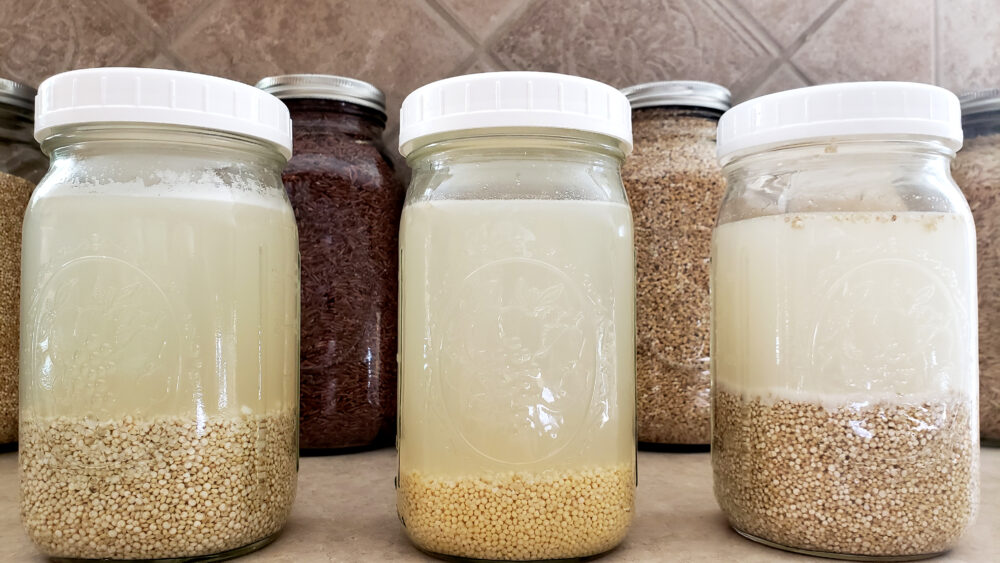
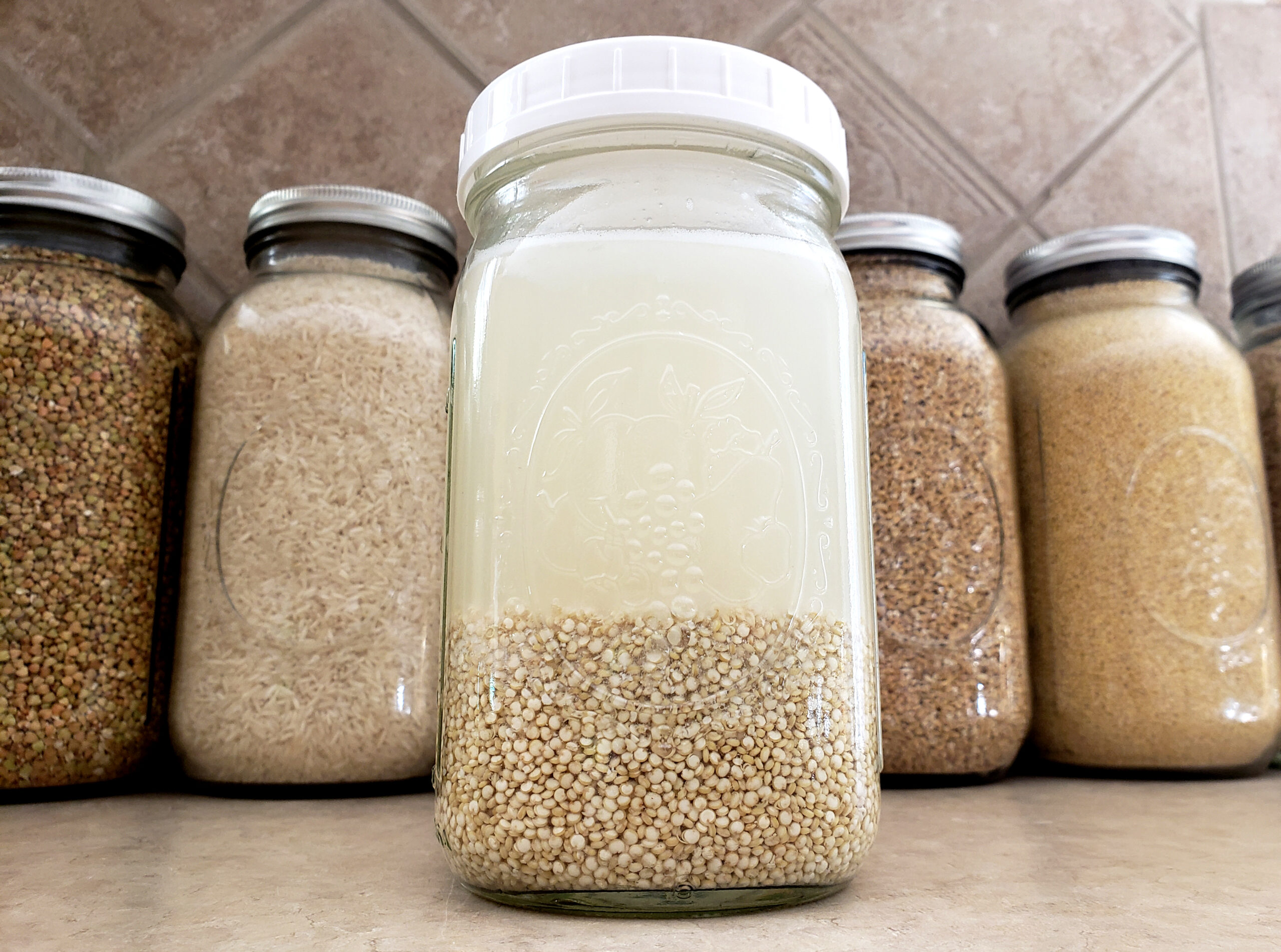
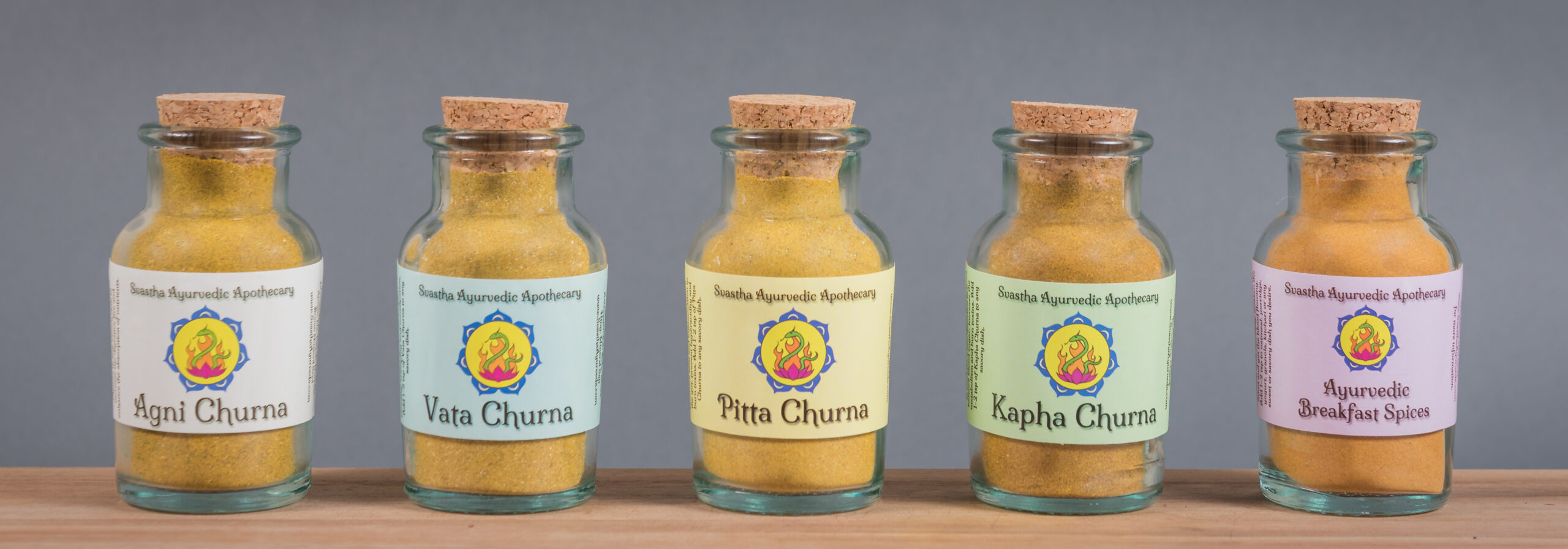



Can I do mung beans the same way?
Hi Iona,
Thank you for your question! I had a similar inquiry when I began fermenting grains and since I could not find much literature on this topic, I thought I would try for myself.
The results were not so great unfortunately. I fermented the mung dal (the split mung bean) for about 2 days total and then went to cook them as usual. I was very surprised to find that the mung beans would not cook. I cooked them even twice as long as normal and they still stayed as hard and crunchy as ever. I then through them in my pressure cooker (which generally can cook even the densest bean), but they still would not cook. I wish I could give you an explanation on why this happened but I am not quite sure.
With this said, I only tried this one time, so maybe there were other influences that affected my results. You are welcome to try it yourself. I would be eager to hear your experience:)
Many blessings,
Danielle
Can the same method be used to ferment vegetables?
Hi Ale,
Fermenting veggies is a fairly different process since it needs to a heavily salted brine as a base in order to avoid mold and yeast overgrowth. The brine is generally made using 5 grams of salt to every 100 grams of water. Then you can add in a liquid culture starter (using the same options as the grains), however, this is step optional (but will speed up the fermentation process) as the brine water and veggies will eventually ferment on their own. Since vegetables tend to float in water, it is important to weight them down or use a clean utensil to push them down frequently as they need to be submersed to avoid spoiling.
Luckily fermenting grains is a bit easier:)
Let me know if you have any further questions!
Many blessings,
Danielle
Good morning and thank you for this wonderful article. Once fermented and cooked, how long will the grains safely keep in the refrigerator?
Hi Audrey,
Thank you for your question!
After cooking fermented grains, they are still susceptible to becoming rancid similar to their non-fermented counterparts. They can last up about 5 to 6 days in the refrigerator, although I personally try to eat all of my leftovers within 2 or 3 days since they can become dry, less flavorful, and “depleted” after too long.
Let me know if you have any further questions!
Many blessings,
Danielle
Pitta types are meant to avoid fermented foods…. would this then be okay for Pitta types as well, or should we avoid even these fermented foods?
Hi Sharm,
Thank you fo this great question! Most Pitta-types can handle a small amount of certain types of fermented foods. I have a very strong Pitta, especially in my digestion. I cannot do kimchi or extremely sour fermented vegetables, but I find that lightly fermented homemade kefir and yogurt suits me very well, even if I eat it daily.
When it comes to fermenting grains, I keep the fermentation level fairly light by only soaking them for 12 to 24 hours. I also use plain homemade kefir or whey as a starter rather than the kimchi juice or another sour/salty brine. By following these guidelines, I have been able to enjoy these fermented foods without disrupting my Pitta. When I steer away from these rules and I ferment until the grains or kefir is really sour, I get a sour stomach and too much heat pretty quickly.
So I suggest giving it a try and let me know if any further questions come up!
Namaste,
Danielle